|
The
|
THE BURGENLAND BUNCH NEWS - No. 225 October 31, 2012, © 2012 by The Burgenland Bunch All rights reserved. Permission to copy excerpts granted if credit is provided. Editor: Thomas Steichen (email: tj.steichen@comcast.net) Our 16th Year. The Burgenland Bunch Newsletter is issued monthly online. It was founded by Gerald Berghold (who retired Summer 2008 and died in August 2008). |
Current Status Of The BB: * Members: 2098 * Surname Entries: 7047 * Query Board Entries: 5018 * Staff Members: 17 |
This newsletter concerns: 1) THE PRESIDENT'S CORNER 2) PULLING THE THREAD 3) A TRIP HOME TO WALLERN (by Patricia Adriana Lopez Schmidt) 4) RESEARCHING THE OSZTOVICS FAMILY STUMP (by Joy Minns) 5) HISTORY OF PINKAFELD (by Hannes Graf) 6) HISTORICAL BB NEWSLETTER ARTICLES: AT THAT TIME - GROßHÖFLEIN 100 YEARS AGO (by Matthias Artner) 7) ETHNIC EVENTS 8) BURGENLAND EMIGRANT OBITUARIES (courtesy of Bob Strauch) |
1) THE PRESIDENT'S CORNER (by Tom Steichen)  Concerning
this newsletter, we start with the usual short bits below, then follow those with a
research effort centered in the Eisenstadt records that provided a fair amount of
generally useful ideas. Next we have a mini trip report written by an Argentinean,
Patricia Schmidt, after she visited one of her ancestral home towns, Wallern. Joy Minns then
treats us to a genealogy exploration of her Osztovics family in Allersgraben
before we provide a Hannes Graf report on the history of Pinkafeld. Concerning
this newsletter, we start with the usual short bits below, then follow those with a
research effort centered in the Eisenstadt records that provided a fair amount of
generally useful ideas. Next we have a mini trip report written by an Argentinean,
Patricia Schmidt, after she visited one of her ancestral home towns, Wallern. Joy Minns then
treats us to a genealogy exploration of her Osztovics family in Allersgraben
before we provide a Hannes Graf report on the history of Pinkafeld.The remaining articles are our standard sections: Historical Newsletter Articles, and the Ethnic Events and Emigrant Obituaries sections. As always, we hope you find something useful herein as you pursue your own research. 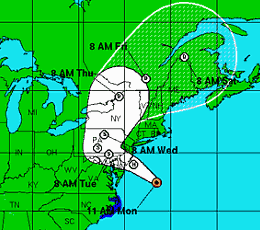 EARLY
PUBLICATION: This issue of the BB Newsletter is "going to press" a few days early given
that we have Hurricane Sandy bearing down on us here in Pennsylvania. Current projections show
the eye of the storm heading directly at my new home in Greencastle, PA, hooking sharply to
the north and east when it gets within 25 miles or so. That is a small blessing, as the worst
of the storm will be northeast of the eye and we are projected to remain slightly southwest of
it. Nonetheless, around 10 inches of rain are expected, as well as sustained winds of 40 mph
and gusts of 60 mph over the next two days. The biggest risk is that the gusts will knock down
trees whose roots have become saturated, thereby taking out our electrical power. If such
forecasts prove true, we will be disconnected from the web for many days. Anyway, I'm choosing
to avoid that potential delay by posting this early. Enjoy! EARLY
PUBLICATION: This issue of the BB Newsletter is "going to press" a few days early given
that we have Hurricane Sandy bearing down on us here in Pennsylvania. Current projections show
the eye of the storm heading directly at my new home in Greencastle, PA, hooking sharply to
the north and east when it gets within 25 miles or so. That is a small blessing, as the worst
of the storm will be northeast of the eye and we are projected to remain slightly southwest of
it. Nonetheless, around 10 inches of rain are expected, as well as sustained winds of 40 mph
and gusts of 60 mph over the next two days. The biggest risk is that the gusts will knock down
trees whose roots have become saturated, thereby taking out our electrical power. If such
forecasts prove true, we will be disconnected from the web for many days. Anyway, I'm choosing
to avoid that potential delay by posting this early. Enjoy! 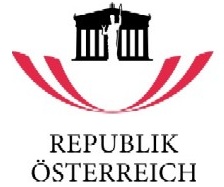 2013
PERSONAL STATUS LAW OF AUSTRIA: A recent rewrite of an law by the Austrian Parliament
could have been a disaster for genealogical research. The draft law, to be put in effect on
April 1, 2013, is known as the Personenstandsgesetz für Österreich (Personal Status Law
of Austria) and is an update of a similar 1983 law. Unfortunately, the rewrite dropped a
paragraph of vital importance to genealogical research. 2013
PERSONAL STATUS LAW OF AUSTRIA: A recent rewrite of an law by the Austrian Parliament
could have been a disaster for genealogical research. The draft law, to be put in effect on
April 1, 2013, is known as the Personenstandsgesetz für Österreich (Personal Status Law
of Austria) and is an update of a similar 1983 law. Unfortunately, the rewrite dropped a
paragraph of vital importance to genealogical research.The prior version of the law allowed open access to birth, marriage and death records older than 100 years; the new draft dropped this paragraph, meaning only records from before 1784 or about immediate relatives (by direct record request only, not by browsing) would be available. This, of course, effectively would halt genealogical research of the nature usually undertaken by Burgenland Bunch members. The good news is that Felix Gundacker, a professional genealogist in Vienna, noted the omission of the paragraph and started a letter-writing campaign to amend the law. In response to Felix’s campaign, BB Vice President Klaus Gerger wrote a letter on behalf of the BB stating our position to the Austrian Parliament. We, of course, wanted access to be as open as possible. The outstanding news is, not only did the campaign restore the previous right to access records, it improved access! The 2013 law, as now amended, continues to restrict birth records for 100 years but reduces the restricted period on marriage records to 75 years and on death records to 30 years. Although the 2013 law is still in draft form, it is not expected that these provisions will be modified again, so the new law will allow many more records to be reviewable in parish registers and civil registry databases; a win for all of us! On behalf of the Burgenland Bunch and genealogists throughout the world, I send thanks to Felix Gundacker for initiating the letter-writing campaign, to Klaus Gerger for writing on behalf of the BB, to the Austrian politicians who saw merit in our position, and to all others who provided awareness of the issue and/or responded to it. Future generations will also thank you!  Speaking
of Klaus, he recently shared a picture from a side trip to the World Heritage Site of the
Petra ruins in Jordan while traveling on business to Amman. Yes, that is Klaus, looking
all too comfortable on a camel! Speaking
of Klaus, he recently shared a picture from a side trip to the World Heritage Site of the
Petra ruins in Jordan while traveling on business to Amman. Yes, that is Klaus, looking
all too comfortable on a camel!Petra was begun about 312 BC and flourished until 363 AD, when an earthquake destroyed many of its buildings and its essential water system. In-between, it served as the capital of the Nabataeans and the center of their caravan trade, as it possessed the advantages of a fortress, controlling the main commercial routes which passed through it to Gaza in the west, to Damascus in the north, to the Red Sea, and across the desert to the Persian Gulf. I can't help but wonder if there still exist people who can trace their roots to Petra. BB Member Kevin Krizman wrote to say: "I have recently moved to SW Germany (Freiburg area) and I get to Burgenland a couple of times per year, where I have re-established ties with some relatives. If anyone has research needs from Croatian Burgenland, let me know and I will do some digging next time I am there. We have also become fond of a resort hotel in Stegersbach (South Burgenland), so that is also an area where I can do a bit of exploration on occasion if anyone has a specific request. My German is getting good enough that I can go digging in public records and knocking on doors if necessary." Editor: If anyone would like to take up Kevin's offer, you can write to me or directly to him (his email address is available in his Member entry). Kevin also said: "I wanted to put in a note of thanks to Jack Fritz for his piece on the emigration of Swabians to Burgenland in the late 18th century. Jack's article shed a little bit of light on a question that has been puzzling me since the results of my initial DNA test late last year: my Y-DNA results estimate my haplogroup as E1b1b1, a group which is concentrated in Armenia, Southern Greece and Croatia, and which is perfectly consistent with my known roots in Croatian-speaking middle Burgenland—both sets of my grandparents emigrated from Croatian Burgenland (in 1907 from Gerersdorf on my father' side and 1925 from Großmutschen on my mother's side). However, my nearest relative in the database is from Stuttgart. It started me to wonder—how could that be? The article from Jack Fritz gave me some clues to pursue further... "The Swabians of Burgenland" (oder „die Burgenländische Schwaben“)—has a bit of ring to it, don't you think? Best regards and until next time, Kevin" Editor: My thanks also to Jack Fritz for writing his article. As I often tell people interested in writing for the BB Newsletter: essentially every aspect of Burgenland genealogy, history or society will be of substantial interest to at least some of our members, so don't worry that what you want to write about seems trivial. Someone will benefit. In this case, Kevin has a new idea to pursue... and Jack provided the clue. We had a new member join this past month who has chosen to utilize a purported "spam-beating" software tool to screen her email. This tool evaluates received email messages to see if the "From:" email address is on a pre-approved list; if not, then the message is dumped into a "waitlist" and the tool replies with a request that the sender click a link to be placed on the approved list. I'm sure the underlying idea is that spam and auto-generated messages will not be able to click the link, thus causing them never to bother the person using the tool. Seems like a good idea, right? Well, not really. First, it places the responsibility (and risk) of controlling spam on people who write or reply to the user of the tool, rather than on the owner of the mailbox, which is where such responsibility should lie. Why should we be the ones responsible for controlling her spam? Simply put, we should not. I also said it places the "risk" of controlling spam on us ...but why, you ask? Because we, are the ones who must take the risk that the link to be clicked is safe. I have little doubt that some spammer (or worse) will soon send (or is already sending) fake requests like this. Second, such a tool is not a good idea because there are many machine-generated messages that the user of the tool would like to or should see. For example, my bank sends me machine-generated messages that I really should read. These would get "waitlisted," delayed and, perhaps, never seen. I became aware of this tool because one of the BB staff sent some family data to this new member and received the resulting "action requested" auto-reply message. Rather than clink the link, she asked me if the BB had a policy about such mechanisms. I said we did not but that I, personally, would never click such a link nor would I want to encourage or support interventions like this. In fact, I'll say it more directly: I find such email intervention tools inappropriate and slightly insulting and I do not encourage people to use such mechanisms… they only harm the person using them. That said, you are welcome to use such tools. Just know, though, that I and others will likely not risk clicking the link merely for the privilege of sending email to you. This is especially true when we are writing for your benefit. We received word that the Hungarian Folk Music Event, held Oct. 12th at the Hungarian Embassy in Washington, DC, was a success. Also, we received some pictures to share with you. Below are organizer Szilvia Fabian Kovacs' comments: I would like to thank all the people who made the event a success, including the Bürkös Zenekar for their fantastic music, the Embassy of Hungary for hosting the event and for the staffs' generosity, Zsuzsanna Seres-Petran for her beautiful singing, and the Hungarian Scouts of Washington D.C. for their support and for providing the tasty hors d'oeuvre. 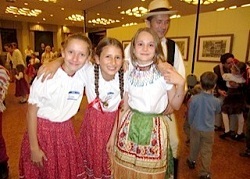
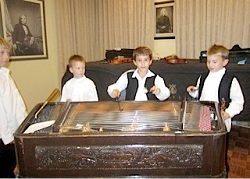
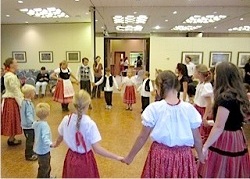 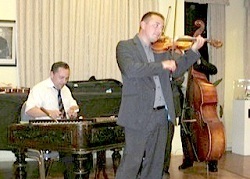
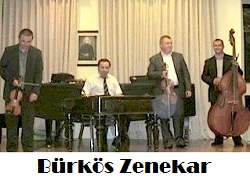
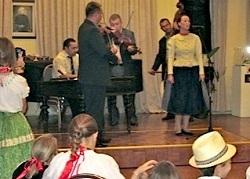 Boo! In keeping with the season, Margaret Kaiser shared this Burgenland Halloween link: 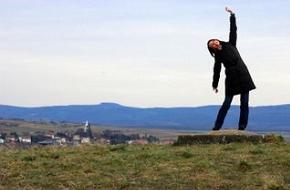 http://pannonien.tv/magische-kraftorte-zu-allerheiligen/2012/.
If you try the link, you will find a German-language article about "Magical Power Places
on All Saints." The article recounts the origins of Halloween (aka, All Hallows Eve,
being the eve before All Saints Day) in Ireland as a celebration of departed loved
ones, and how places of magical power, such as Stonehenge, Hexenhugel (right), etc.,
were sought out to better reach and remember those who died. The article goes on to describe
and picture a half-dozen places in Burgenland that have reputations for being magical or
powerful. It is a light-hearted piece but still shows an interesting aspect of Burgenland. http://pannonien.tv/magische-kraftorte-zu-allerheiligen/2012/.
If you try the link, you will find a German-language article about "Magical Power Places
on All Saints." The article recounts the origins of Halloween (aka, All Hallows Eve,
being the eve before All Saints Day) in Ireland as a celebration of departed loved
ones, and how places of magical power, such as Stonehenge, Hexenhugel (right), etc.,
were sought out to better reach and remember those who died. The article goes on to describe
and picture a half-dozen places in Burgenland that have reputations for being magical or
powerful. It is a light-hearted piece but still shows an interesting aspect of Burgenland.. |
2) PULLING THE THREAD Burgenland is not always the ultimate homeland for our members and finding the thread that will allow the next step to be taken toward that further homeland is not always easy. I recently assisted Nina Egert in her search for her family homeland. Nina first contacted me last month to thank me for writing the BB Newsletter (her thanks are appreciated!) and then to comment on Amy Ernharth's article in Newsletter 224 (A Naïve Newcomer’s Story), especially the part of how place names can get distorted. Those comments led to an interesting search that provides useful general information; thus this article. Nina wrote (in part): In the last few years of his life, my dad started losing some of his mental sharpness, and mentioned some things I had not heard before – bits of family history that he probably did not want me to know when he was in full possession of his faculties. After he died and I started going over my folk's papers, I began to realize that the family histories that they both had been telling me all along were missing some factual details. One of my first clues that there was more to the family story than I had always been told was when my father started saying he had been born in Kismarton, Hungary, instead of Eisenstadt, Austria, as I had previously been told. 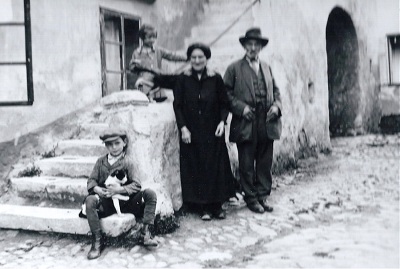 Looking
for Kismarton on Google, I found they were one and the same. The rest of his birth story --
the sketchy bits he told -- seems to accurate: his parents were living in Vienna and his
mother's mother was a mid-wife, so she went home to Mom for the birth. However, pretty much
everything else my folks told me about their past had some level of distortion. My maternal
cousins gave me a bit of information from that side, but, at some point, I sort of gave up
trying to find more because the stories are so convoluted. Looking
for Kismarton on Google, I found they were one and the same. The rest of his birth story --
the sketchy bits he told -- seems to accurate: his parents were living in Vienna and his
mother's mother was a mid-wife, so she went home to Mom for the birth. However, pretty much
everything else my folks told me about their past had some level of distortion. My maternal
cousins gave me a bit of information from that side, but, at some point, I sort of gave up
trying to find more because the stories are so convoluted.Which is why I appreciate this newsletter so much -- my one bit of true heritage - the one family gravesite I know of -- is in Burgenland. So, for whatever issues might be made of whether Dad was born in Austria or Hungary, he knew he was from Burgenland, as do I. 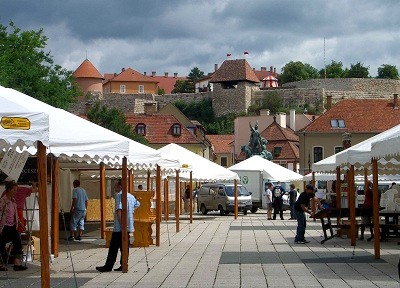 Nina
and I exchanged a few more messages before she commented: “Egert" is an
Hungarian-derived name, from lands (Ed: around Eger, about 80 miles E-NE of Budapest)
also owned by the Esterhazys [the Napa Valley of Hungary -- worth checking out if you ever go
to Hungary]. During that time, subjects of the Austro-Hungarian Empire were moving all over
the Empire, and I have no idea when my personal ancestors moved nor where. Was there some sort
of connection between the two areas owned by the Esterhazys that facilitated a move from Eger
to Eisenstadt? Dunno. I have no idea how to begin to delve into that because neither my Dad
nor his brother provided their children with sufficient information to investigate. So it's
fun reading the journeys that other member of our group go through. Maybe someday I'll get a
clue as to where to look. Nina
and I exchanged a few more messages before she commented: “Egert" is an
Hungarian-derived name, from lands (Ed: around Eger, about 80 miles E-NE of Budapest)
also owned by the Esterhazys [the Napa Valley of Hungary -- worth checking out if you ever go
to Hungary]. During that time, subjects of the Austro-Hungarian Empire were moving all over
the Empire, and I have no idea when my personal ancestors moved nor where. Was there some sort
of connection between the two areas owned by the Esterhazys that facilitated a move from Eger
to Eisenstadt? Dunno. I have no idea how to begin to delve into that because neither my Dad
nor his brother provided their children with sufficient information to investigate. So it's
fun reading the journeys that other member of our group go through. Maybe someday I'll get a
clue as to where to look. Well,
this "lack of a clue" seemed like too big a challenge to let go unaddressed. I looked in our
Member's list to see which family names Nina was researching (besides the Egert surname) and
discovered that she did not have a Member entry. However, there were bare-bones entries
in Surnames under Egert and Wittman and an entry in Villages for Eisenstadt so it seems that
we (the BB) either failed to create a Member entry for Nina or accidentally deleted it. I
wrote to Nina asking if she had more information (first names, dates, places, etc.) than just
what was in Surnames so I could create a more useful Member entry (and, of course, to
facilitate my search for that clue). Well,
this "lack of a clue" seemed like too big a challenge to let go unaddressed. I looked in our
Member's list to see which family names Nina was researching (besides the Egert surname) and
discovered that she did not have a Member entry. However, there were bare-bones entries
in Surnames under Egert and Wittman and an entry in Villages for Eisenstadt so it seems that
we (the BB) either failed to create a Member entry for Nina or accidentally deleted it. I
wrote to Nina asking if she had more information (first names, dates, places, etc.) than just
what was in Surnames so I could create a more useful Member entry (and, of course, to
facilitate my search for that clue).She quickly replied with just enough information to let me get started... and, using a combination of FamilySearch.org and Ancestry.com, I soon found lots of information on both her father and uncle and their families that helped me narrow my search in the Eisenstadt civil records. There are two "asides" here that are worth taking time to mention. First, providing just a bare-bones Member entry (i.e., just surnames and villages) pretty much guarantees that you will not get much help from the BB staff. Even we, with all our experience, can't guess the appropriate years or the particular people you are interested in if all we have are surnames! If you need our help, share first names and dates and places of any births, marriages or deaths that you know. We simply must have a tangible thread to grab to follow the trail into the historical records. If your current member entry does not provide this type of info, consider updating your member entry by using the Change Information Form on the BB homepage. Even if you don't want help, that kind of info will help other members connect to you (if you do need help, just ask... the worst that will happen is we will ignore you, but that will likely occur only if this aside prompts so many requests for help that we are overwhelmed!) Second, you should note that the historical area that people called "Eisenstadt" was composed of more than one record-keeping entity (i.e., Ortsteile / district). Historical "Eisenstadt" included Alsókismartonhegy (Eisenstadt-Unterberg), Felsőkismartonhegy (Eisenstadt-Oberberg), Kismarton (Eisenstadt-Stadt), and Kismartonváralja (Eisenstadt-Schloßgrund). (Oberberg and Unterberg were also collectively known as Am Berg.) If you don't know where in "Eisenstadt" your people lived, you may need to search all four sets of records. In addition, both Kleinhöflein and St. Georgen am Leithagebirge eventually became part of Eisenstadt. Also, note that the Eisenstadt Jewish Quarter was in Alsókismartonhegy (Unterberg), Jews being about 80% of its residents (circa 1910)... but not all Jews lived in the Quarter (only abut 55%) so, again, you may need to search all four sets of records. But back to Nina's search... The information she provided allowed me to find US naturalization records, death records, and travel records (ship manifests, etc.) that gave me birth data for her father and uncle and confirmed that Eisenstadt was the right place to look. It also indicated that the family was Jewish. This led me to more questions as I did not know whether Jewish records were included in the Eisenstadt civil records... so I asked the BB staff: 1) Would this birth be recorded in the civil records? 2) If so, in records for which political unit, Kismarton, Alsókismartonhegy, or other? 3) If recorded, would it have been timely recorded or might it have been delayed some months? 4) Do you have any other thoughts on Jewish births in 1911 Eisenstadt that might assist me? Fritz Königshofer responded saying: Was it in a family which had homerights in Eisenstadt? Homerights were the early concept of citizenship. If the birth took place in Eisenstadt and the parents had homerights there, or in any of the towns or villages belonging to the civil recording district of Eisenstadt, then I believe that the recording should have happened within days, most of the times on the same day or the following day. I don't know how the civil recording duty was if the birth was in a family with no homerights in the civil recording district, like, say, a mother who was visiting with a local family. My assumption is that the birth would nevertheless have been recorded in the local civil records. If the birth was to a local father or mother in a non-Hungarian place such as Vienna (where many young people worked) or overseas, then I believe these locals (with local homerights) were obliged to inform the civil recording offices at home about the birth. This duty likely had the purpose to establish inheritance rights and other rights of children. The records for these foreign vital events were written in the records in prose (not following the form) between 1895 and 1906, but from 1907 they followed the simplified forms for local recordings, at least in the duplicates filmed by LDS. The recordings of foreign births were typically months or years later, but most of the times within a few months of the event. You need to browse a bit through the records of Eisenstadt and the two "Hegy's" to see how the residences compare with each other. What about the "varalja"? Does that translate to "environs"? Maybe all of these records need to be searched for the Hebrew birth record you are looking for. If the birth happened in Eisenstadt, I see no reason why it should not have been recorded immediately. Jews were treated the same way as other locals. Regards, Fritz Hannes Graf also replied and shared a conversation he had with Johannes Reiss of OJM (Austrian Jewish Museum) in Eisenstadt. Although the conversation was about records from before the 1895/6 establishment of civil recordings, it still contained useful information about Jewish records. Hannes asked whether the Catholics included Jews in their parish registers and Johannes replied "yes, of course," but that the births were first recorded in the Jewish Community registers then forwarded to the Amt (civil office), where they were copied (unfortunately, often with errors). Hannes also asked about the IKG (Israelitischen Kultusgemeinde = Jewish Community) data. (Note: The IKG was established in 1849 when Emperor Franz Josef sanctioned the establishment of an autonomous Jewish religious community, vesting it with diplomatic status as an official representative serving the Jewish population of Vienna as well as the Jewish community of Austria and allowing it to independently manage internal and religious concerns. It became the official record-keeping entity within the Jewish community.) Johannes replied that the IKG records run from 1833 to 1895/6 and are stored in the Sopron archive or, for southern Burgenland, in the Szombathely archive. Hannes also provided link to the Vienna and Graz IKG websites: http://www.ikg-wien.at/?lang=en http://www.ikg-graz.at/ Returning to Nina's search... Given a firm birth date and his parents' full names, I quickly found the civil record of birth for Nina's father. It was recorded in the Alsókismartonhegy records about a week after the birth and was on the typical preprinted Hungarian birth form populated, unfortunately, with the typical difficult handwriting. I could make out parts of it, enough to confirm that I had the right one and that Nina's story, that the parent's lived in Vienna but the birth was in Eisenstadt, was true. As a bonus, it provided a Wien address and an occupation for the father. However, the real bonus was in the comment box, which appeared to say something about the father being from Galiczia (Galicia)... however, I could not work out all of the writing so I wasn't sure. Again, I went back to the BB staff for help, attaching a copy of the record and asking whether anyone could read and translate it (the comment text is below if you want to try it yourself).  Again Fritz replied, saying: I am on a break in Sarasota and have no access to my Hungarian dictionaries. Must be content with the translation help by Google. The entry of the father, Markus Egert, lists his occupation as a "commercial employee" probably meaning a salesman. The note seems to say that the father was a resident of Mocsis in the district of Kac, Galicia (or Kac in the district of Mocsis. I cannot find these places. However, Wikipedia has an entry about a town called Mocsiska, or Mociesze, Mostyska, a town 40 miles west of Lwow (Lemberg), a center of Jewish settlement in Galicia. Taking this hint, I dug deeper into my Hungarian dictionaries and maps of the area once known as Galicia (it is now split between Poland and Ukraine). I replied to Fritz: Using your hint, I think it says the father had citizen rights in Makuniov village, Mocsiskai district, Galacia (Mocsis-kai is split between lines). Mocsiska was both a village and district in the early 1900s and községben translates to village, kerületi to district, and illetőséggel to resident (rights). Separately, I wrote to Nina that I had consulted with the BB staff and we think we may have clarified what the text in the comment box says: “Az atya Makuniov községben, Mosciska kerületi, Galiczia, ben illetoséggel.” “The father Makunióv village, Mosciska district, Galicia, was a resident.” Mocsiska was both a village and district in the early 1900s and had about 2000 Jewish citizens. You’ll find it in current-day Ukraine (not far from the Polish border), about 40 miles west of L’viv (Lemberg). Makunióv (now Makuniv) is about 10 miles southeast of Mocsiska. After Nina thanked me for the information, I wrote the following message to her, saying: Hi Nina, Galicia was part of the Austro-Hungarian Monarchy (Empire) and was in the Austrian half politically in 1911. Vienna was the big city of choice to which people emigrated or worked in, as is apparently the case for Markus (it seems clear he still retained citizen rights in Galicia). It seems prudent to see what you can find in the Makunióv / Mosciska area records… that may give you a trail back into Hungary, if indeed that is where the family came from. I wish you good hunting! Tom Fritz had some final words: The note we tried to interpret can serve as a good example for the concept of citizenship based on "belonging" to a village or town. There is room for confusion because recording forms usually were limited to carry two place names, i.e., the place of birth and the place of current residence. However, in theory there were three places of relevance for everybody, namely the place of birth, the place of your current "belonging to," and the place of your current residence. The place of belonging was very important, as it had the obligation to provide you shelter when you were destitute. In fact, I now think that births abroad had to be reported home primarily for the reason to establish the place of belonging. Regards, Fritz 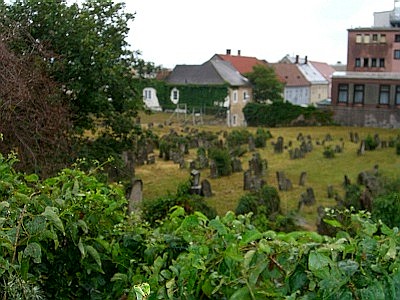 Later,
when I told Nina that I was writing this article, she sent some pictures (including the one to
the right) and added the following comment: My dad was born in one of the houses
pictured in the row next to the Jewish cemetery in Eisenstadt. My father's maternal
grandfather's grave is in that cemetery. For Jews, who lost large numbers of their family in
the holocaust, the presence of an actual grave takes on extra meaning. As far as I know, my
grandparents are all lying with bullets in their skeletons in mass graves in some unknown
field in the Ukraine. Later,
when I told Nina that I was writing this article, she sent some pictures (including the one to
the right) and added the following comment: My dad was born in one of the houses
pictured in the row next to the Jewish cemetery in Eisenstadt. My father's maternal
grandfather's grave is in that cemetery. For Jews, who lost large numbers of their family in
the holocaust, the presence of an actual grave takes on extra meaning. As far as I know, my
grandparents are all lying with bullets in their skeletons in mass graves in some unknown
field in the Ukraine. Some additional research in the Eisenstadt civil records yielded names of other great-grandparents, great aunts, etc. Nina replied: For my cousins and I, for a long time, the grave of our great-grandfather in Eisenstadt was the only tangible link we had to our family heritage; but now, with your helpful research, it may turn out that there are even more family graves on our great-grandmother's side. How wonderful. |
3) A TRIP HOME TO WALLERN (by Patricia Adriana Lopez Schmidt) Ed. Note: Patricia Adriana Lopez Schmidt of Buenos Aires, Argentina, joined the BB in May 2012 listing surnames Lopez from Spain, Schmidt from "Drobing" and Schneider from Wallern. She also said "I am the granddaughter of Michael Schmidt born in Drobing (son of Michael Schmidt and Ines Rastel) and Elisabeth Schneider born in Wallern (daughter of Franz Schneider and Maria Stanff). They got married in 1924 in Córdoba, Argentina when he was 44 and she was 28 and both had been previously married with Catalina Stenseil and Enrique Denk respectively, both buried in La Cumbre and Córdoba City." Clearly, the first of her surnames, Lopez, being from Spain, is not a Burgenland name. The second, Schmidt, might be but we have no "Drobing" in Burgenland. I wrote back to Patricia asking her to confirm this place and suggesting it might be Drösing, Austria (30 miles NE of Vienna). I also wrote that I had found Elisabeth Schneider’s birth record, which said that her parents were living in house #164 (now Rosengasse 48) at the time of her birth and that her mother’s last name was spelled Stampf on the birth record. However, I also noted that Father Graisy gives the mother’s maiden name as Maria Stampfl and says she was from Tadten; and that Franz Schneider was son of Stefan Schneider and Maria Weinhandl of house 154 and grandson of Mathias Schneider and Maria Jandl of house 27. Armed with this information, Patricia visited Burgenland and wrote the following touching trip report. 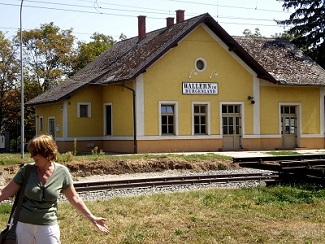 Patricia
writes: Hi Tom: I have returned from my trip to Austria with a friend and specially to
Wallern im Burgenland where my grandmother, Elisabeth Schneider, was born, and it was a very
emotional experience for me. I got a train in Wien and after a 90-minute trip through mostly
farmlands, I arrived in Wallern. The train station is closed so you have to get off among the
grass and stones. Near the station there's a restaurant and the owner fortunately speaks
English because I don't speak German. He gave me a map and showed how to reach the street
where my grandmother was born: Rosengasse 48. Patricia
writes: Hi Tom: I have returned from my trip to Austria with a friend and specially to
Wallern im Burgenland where my grandmother, Elisabeth Schneider, was born, and it was a very
emotional experience for me. I got a train in Wien and after a 90-minute trip through mostly
farmlands, I arrived in Wallern. The train station is closed so you have to get off among the
grass and stones. Near the station there's a restaurant and the owner fortunately speaks
English because I don't speak German. He gave me a map and showed how to reach the street
where my grandmother was born: Rosengasse 48.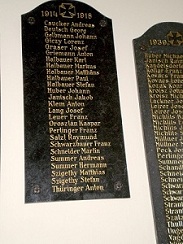 The
town is very quiet. The weather was very warm so there wasn't people in the streets. I visited
the church of St. Mathias. I thought about the coincidence that I chose that name for my son.
The church is very nice and has some memorials for those who died in the First and Second
Wars. I know that Schneider is a very common name in that area but I was wondering which of
those Schneider that were mentioned could be my ancestor. The
town is very quiet. The weather was very warm so there wasn't people in the streets. I visited
the church of St. Mathias. I thought about the coincidence that I chose that name for my son.
The church is very nice and has some memorials for those who died in the First and Second
Wars. I know that Schneider is a very common name in that area but I was wondering which of
those Schneider that were mentioned could be my ancestor.I also visited the cemetery and found a lot of Schneider tombs. 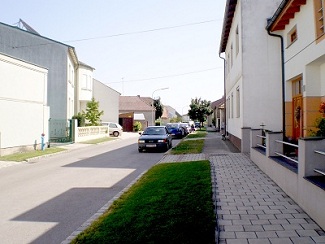 Finally
I walked to Rosengasse 48 and, although I knew that it was not the original house where my
grandmother was born, I felt deeply moved. The house looked like most of houses in Wallern:
pretty, simple and neat. In that moment, a young girl came to us on her bicycle and I asked
her if she knew who lived in that house; she was very kind and phoned her mother to find
out... and the answer was Maria Schneider. She went into the garden and knocked at the door
but there was nobody at home. I'm sending a letter to this Maria Schneider. Finally
I walked to Rosengasse 48 and, although I knew that it was not the original house where my
grandmother was born, I felt deeply moved. The house looked like most of houses in Wallern:
pretty, simple and neat. In that moment, a young girl came to us on her bicycle and I asked
her if she knew who lived in that house; she was very kind and phoned her mother to find
out... and the answer was Maria Schneider. She went into the garden and knocked at the door
but there was nobody at home. I'm sending a letter to this Maria Schneider.Before I went to Wallern, I have found the name of the ship in which my grandmother came to Argentina: "Köln". She came in 1922 with her first husband, Heinrich Denk, 6 children of his first marriage, and my aunt Agnes of 2 years old. Now, when I came back home, a cousin found a letter from 1980 from a granddaughter of my grandmother's sister Susanne. Her name was Melanie Griemann and she told that Susanne Schneider, who remained in Austria, got married with Johann Griemann and had 5 children. One of them - Andreas, born in 1923 - was the father of Melanie. Well Tom, thank you very much again for your help to find my grandmother's birth record and excuse me for my poor English. I attached some pictures of Wallern. Kind regards, Patricia |
4) RESEARCHING THE OSZTOVICS FAMILY STUMP (by Joy Minns) 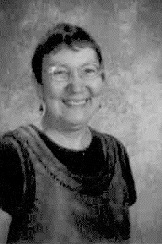 Since
I began my research into my dad’s family tree I’ve encountered quite a few surprises. As you
can see from the title above, it seems that the Osztovics tree was cut off not far from its
roots. A Croatian woman I spoke to said it was very common to have arranged marriages and 3rd
cousins were popular mate choices. Since
I began my research into my dad’s family tree I’ve encountered quite a few surprises. As you
can see from the title above, it seems that the Osztovics tree was cut off not far from its
roots. A Croatian woman I spoke to said it was very common to have arranged marriages and 3rd
cousins were popular mate choices.My dad, Frank Ostovitz, was born in Baltimore in 1914. He was the oldest of five surviving sons and knew more about the Ostovitz family than any of the others. 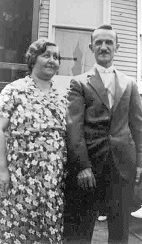 This
isn’t saying much since he basically knew that, although the family used German as a means of
communication, they were Croatian. My grandfather, Frank (Franz, Ferencz), talked about
getting “mein trade” as a butcher in Vienna. My father was named Franz Joseph because
Emperor Franz Joseph supposedly waved to my grandfather at some point. My grandmother, Louise
(Alojzia), a second cousin, also with the surname Ostovitz, claimed to have attended school in
a convent in Budapest. My mother had interviewed my grandparents to find out their parents’
and siblings’ names and had written this information in our Bible. This is all that I knew
about my Ostovitz family when I started my research into my paternal line this year. This
isn’t saying much since he basically knew that, although the family used German as a means of
communication, they were Croatian. My grandfather, Frank (Franz, Ferencz), talked about
getting “mein trade” as a butcher in Vienna. My father was named Franz Joseph because
Emperor Franz Joseph supposedly waved to my grandfather at some point. My grandmother, Louise
(Alojzia), a second cousin, also with the surname Ostovitz, claimed to have attended school in
a convent in Budapest. My mother had interviewed my grandparents to find out their parents’
and siblings’ names and had written this information in our Bible. This is all that I knew
about my Ostovitz family when I started my research into my paternal line this year.This past December, I booked a trip for my daughter and me to go to Croatia and Hungary to learn a bit more about our roots. I had had no luck in learning any information using the Internet and thought that I might learn something when staying in Zagreb and Budapest. In February, I got an answer to a question I had posted on a bulletin board site and that’s when my search started gaining momentum. Imagine my shock to find out that our Croatian family had its roots in the Burgenland! I was told about the Burgenland Bunch and joined immediately. With the help of this group, I learned an amazing amount of information within days about the Ostovitz family. In October 2011, I had gone to the Maryland archives in Annapolis and had researched death certificates and marriage licenses. I found the marriage license for my grandparents, who were married in Baltimore in January 1910. They were listed as cousins, which went along with the family story that this was an arranged marriage. This was the only clue I had as to when my grandfather Frank might have come to the states. I had already found the listing for my grandmother’s family. Her entire family had come to Baltimore from Pancsova (now Pančevo, Serbia) in 1904. This listing included the name of a brother, Vilnos, that I had not known about. I found the death certificate for Paul Ostovitz, Sr., my great-grandfather. He was listed as a widower, so I knew that his wife, Mary, had died before 1931, although I’ve never found a death certificate for her. I also found death certificates for my dad’s siblings and for some of his cousins. It was sad to read of the deaths of so many children. I found absolutely no information on the mysterious Vilnos. On Ancestry.com, I found the manifest for a trip that my grandmother and grandfather had taken in 1911. Their destination was his father’s farm in ??...it looked like Harokany. A clue, but not too helpful, as I couldn’t find a place called Harokany. 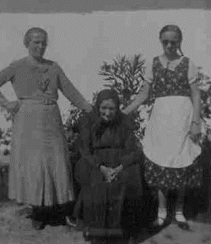 Now,
back to last February! I was on FamilySearch.org and found my grandfather’s baptismal record.
From this I learned his mom’s maiden name: Milosits. The church was in Kethely, Vas, Hungary.
Hungary, not Croatia? I could find no Kethely listed for any country. This is when I
posted my message on the board: "Where is Kethely now?” I received an answer which
opened up all sorts of information. Now,
back to last February! I was on FamilySearch.org and found my grandfather’s baptismal record.
From this I learned his mom’s maiden name: Milosits. The church was in Kethely, Vas, Hungary.
Hungary, not Croatia? I could find no Kethely listed for any country. This is when I
posted my message on the board: "Where is Kethely now?” I received an answer which
opened up all sorts of information.Fritz Königshofer, who answered, told me that Kethely was Neumarkt im Tauchental and he listed towns which attended the church there. One of the towns was Allersgraben (Sirokany). Could the Harokany I was looking for be Sirokany? I was told that these towns are now in Austria. At this point, I learned about the Burgenland Bunch. Both Tom Steichen and Jürgen Brandweiner have been immensely helpful. They both did tons of research for me and gave me so much information that my head was spinning. The 1857 house list for Allersgraben was a shock. Nine of the 11 homes were owned by an Osztovics. 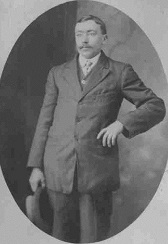 After
some digging, I learned that those 2 remaining homes were owned by Osztovics in-laws: Theresia
Bursits in house 5 was an Osztovics by birth and Josef Tallian in house 11 was also a
relative. I looked at the town on Google Earth and it doesn’t appear to differ much today from
the way it looked in 1857. After
some digging, I learned that those 2 remaining homes were owned by Osztovics in-laws: Theresia
Bursits in house 5 was an Osztovics by birth and Josef Tallian in house 11 was also a
relative. I looked at the town on Google Earth and it doesn’t appear to differ much today from
the way it looked in 1857.The Milosits family lived in Bandol (Weiden) and Jürgen traced them back to the late 1700’s. The Osztovics are a bit harder to trace. One problem is that there were so many of them in the same town and they gave their children the same names. Not only that, but the Osztovics men tended to marry women with the same surname. I ordered the LDS microfilms for both Neumarkt (Kethely) and Weiden (Bandol). In any given year, there were 8 or 10 Maria or Anna Ostovics born. The men’s names were somewhat better but tended to be Janos, Josef, or Stephan. I’m still untangling the information but have sorted out quite a bit. My grandfather had named 5 brothers and 1 sister; I found 2 more sisters who died the same year they were born; I also found a brother, Karl (another very popular family name), who would have been 12 years older than my grandfather. I can find no death record for him but figure he must have died as an infant. Of course the other possibility is that he was a family black sheep. (I think that’s why we never heard about Vilnos, my grandmother’s brother!) Two of the brothers, Stephan and Joseph, were priests. My great-grandmother had 10 children over a 26 year period. Yikes! My grandmother always claimed that, as the only girl in her family, she was placed in a convent in Budapest while her salesman father traveled with his wife and sons. I suppose it’s possible that she spent a few months in Budapest but I found her school records for 1896 and 1899 (as my Hungarian has improved, I’ve recognized the meaning of some old paperwork that I have). She attended a school in Nagybecskerek (Bečkerek), which is now Zrenjanin, Serbia. The signature on one record is Maria Talian Osztovics. I started researching the 100 or so Maria Tallians (am I exaggerating?) and located a few married to a Paul. Jürgen was a big help here too. He told me that the name Alojzia was Louise, my grandmother’s name. I had assumed that this was a boy’s name. Then I got another surprise by poring through the records: Louise had had 2 sisters, Gisela and Anna, both of whom died as young children. After a lot of digging through the LDS records for Kethely, I found that the Johann and Josef who owned houses 1 and 2 in Sirokany were brothers and that they were the grandfathers of my grandparents. Jürgen had told me that my great-grandmother’s parents were Ferencz Milosits and Anna Holczer and that Ferencz had married a third cousin, Maria Simonovics, after Anna’s death. I found 5 children born to Ferencz and Anna and another 3 or 4 born to him and Maria. One of my great-grandmother’s full sisters was Julianna Milosits. She married a cousin of her brother-in-law (of course!), Stephan Osztovics. Going through some names on the Burgenland Bunch web site a few weeks ago, I found a Julia Ostovitz who had lived in the Chicago area. She was my great aunt. She was never mentioned by my family. They did speak of a cousin, Steve, in Chicago, but this couldn’t have been Julianna’s husband since I think she was a widow when she came to the US. With the numerous Stephen’s who came to the US, it will be difficult to figure out which cousin he was. I’m also looking into Anna Ostovitz Sepsey in Chicago and Stella Ostovitz Wukitsch in Allentown, PA. I think both women might be Julianna’s daughters. I also have a letter from a cousin, Johann Bursits, in Pittsburgh who had visited the relatives after World War II and found them “as expected.” Not a lot of help. 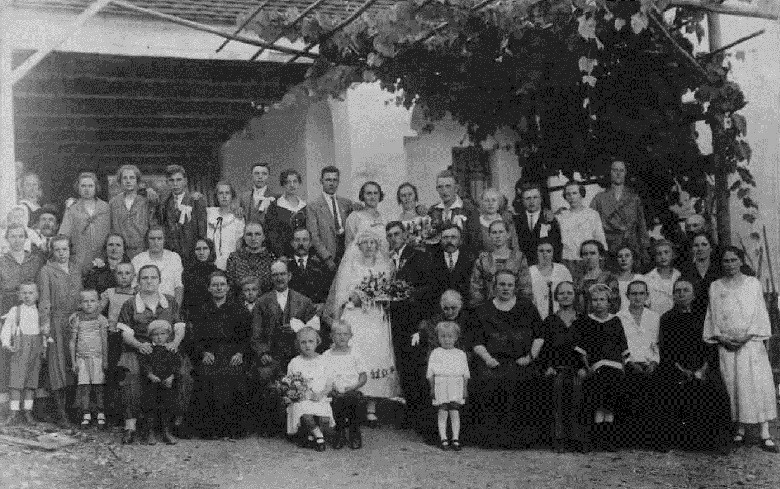 I still have a lot of work ahead of me. With cousins marrying each other so often and with the lack of imagination in naming the children, there is a lot to untangle. Speaking to cousins here in the US that I’ve met recently, I’ve learned that their parents also knew absolutely nothing about the family in the old country. In one case, the cousin is first generation and her father never spoke of anything or anyone in the past. I want to learn more about the mysterious Vilnos (William) Ostovitz. I also want to learn more about a man named Emerich Beck, listed as a brother-in-law and sponsor for my grandmother’s family when they immigrated to Baltimore. This is a name never mentioned to me or my cousins. When I read the Burgenland Bunch newsletter now, I look at it with new eyes. In the last newsletter I read of the deaths of Magda Zakany and of John Milisits. Were they both cousins that I never knew about? [Ed note: Joy is interested in making contact with the Magda Zarkany family to explore this possible family relationship. Write her via her email address on the Members page if you can share family information.] I hope to return to Europe within a year and to spend my time in Austria and to visit Allersgraben and Weiden. Will I walk through those towns and be related to almost everyone there? |
5) HISTORY OF PINKAFELD (by Hannes Graf) We have been republishing some articles Hannes wrote over the past two years for placement on his personal site, Spirit of Gradišće - Őrvidék Group. This month, we are presenting an article about Pinkafeld (Hungarian: Pinkafö; Kroat: Pinkafelj; Romanes: Pinkafa) in Oberwart. 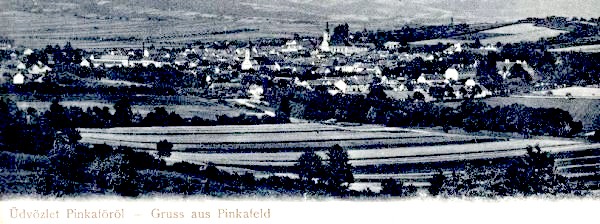 The
changeful history of Pinkafeld dates back to the Neolithic Era. The oldest finds are from this
period and are about 5000 years old. Since the 2nd century BCE, an iron smelting installation
from the La Tene period existed south of Pinkafeld. It was part of a Celtic settlement that
was located in the general area of today’s railway station. The numerous burial mounds
(tumuli) around Pinkafeld, containing primarily potshards and bones, are from the Roman
period. The
changeful history of Pinkafeld dates back to the Neolithic Era. The oldest finds are from this
period and are about 5000 years old. Since the 2nd century BCE, an iron smelting installation
from the La Tene period existed south of Pinkafeld. It was part of a Celtic settlement that
was located in the general area of today’s railway station. The numerous burial mounds
(tumuli) around Pinkafeld, containing primarily potshards and bones, are from the Roman
period.Pinkafeld is first mentioned in written documents in 860. In that year, along with numerous other estates, King Louis the German donated the “ad Peinicahu” manor—today’s Pinkafeld—to the archbishop of Salzburg. The emergent settlement belonged to the holdings of the counts of Güssing. In 1289, the village, together with its fortified church, was destroyed in the course of the “feud of Güssing.” 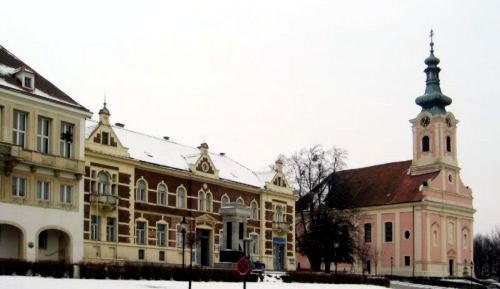 In
the 14th century, Pinkafeld became the administrative headquarters and economic centre of the
house of Bernstein, to which it had belonged since 1291. This development was furthered by the
Hungarian King, Louis the Great, in the 14th century when he granted different market
privileges to the citizens of Pinkafeld, and reached it’s peak in 1397 when Pinkafeld gained
its independence from the house of Bernstein. Landlord Nikolaus von Kanizsay granted to the
people of Pinkafeld both higher and lower jurisdiction, the right to hold a market, the right
of toll collection, freedom from paying tribute or performing forced labor and the election of
the judges. In subsequent centuries, the people of Pinkafeld were always very careful to
retain these privileges. In
the 14th century, Pinkafeld became the administrative headquarters and economic centre of the
house of Bernstein, to which it had belonged since 1291. This development was furthered by the
Hungarian King, Louis the Great, in the 14th century when he granted different market
privileges to the citizens of Pinkafeld, and reached it’s peak in 1397 when Pinkafeld gained
its independence from the house of Bernstein. Landlord Nikolaus von Kanizsay granted to the
people of Pinkafeld both higher and lower jurisdiction, the right to hold a market, the right
of toll collection, freedom from paying tribute or performing forced labor and the election of
the judges. In subsequent centuries, the people of Pinkafeld were always very careful to
retain these privileges.The 15th century marked the beginning of a rapid economic boom of the so-called “privileged market.” In 1445, Pinkafeld was taken in pawn by Emperor Frederick III, who confirmed the existing privileges and extended the exemption from duty. On April 14th, 1445, at the Lamplfeld south of Pinkafeld, Emperor Frederick III was ambushed by the troops of Hungarian King Matthias Corvinus and was forced to retreat. In 1463, Pinkafeld, together with the estates of Bernstein, came into the possession of the Hapsburg family and remained part of Haus Austria for the next 200 years. 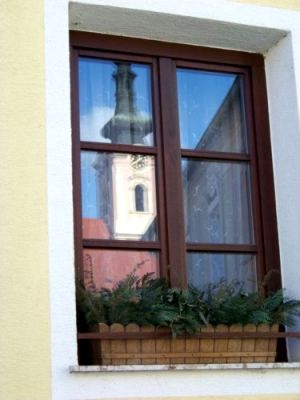 During
the time of the Turkish wars, Pinkafeld, too, suffered greatly. In 1529, the village was
plundered and put to the torch, and completely destroyed in 1532. In the 16th century, the
Protestant religion found a foothold in Pinkafeld through the auspices of the Königsberger
family, which had been in possession of the Bernstein holdings since 1517. In 1644, Count Adam
von Batthyány took over the holdings of Bernstein. In 1649, the Bernstein estates, together
with Pinkafeld, became part of Hungary until 1921. The new owners built a castle in Pinkafeld
around 1658. The brothers Paul and Christoph Batthyány divided the Bernstein holdings into two
parts and Pinkafeld became its own economic entity. The armed citizens of Pinkafeld were
successful in fighting against Turkish troops during the Ottoman war of 1663/64. During the
Great Ottoman War of 1683, Styrian farmers and border guards pillaged and devastated Pinkafeld
in retaliation for the invasion of troops from the Batthyány family into Styrian territory. During
the time of the Turkish wars, Pinkafeld, too, suffered greatly. In 1529, the village was
plundered and put to the torch, and completely destroyed in 1532. In the 16th century, the
Protestant religion found a foothold in Pinkafeld through the auspices of the Königsberger
family, which had been in possession of the Bernstein holdings since 1517. In 1644, Count Adam
von Batthyány took over the holdings of Bernstein. In 1649, the Bernstein estates, together
with Pinkafeld, became part of Hungary until 1921. The new owners built a castle in Pinkafeld
around 1658. The brothers Paul and Christoph Batthyány divided the Bernstein holdings into two
parts and Pinkafeld became its own economic entity. The armed citizens of Pinkafeld were
successful in fighting against Turkish troops during the Ottoman war of 1663/64. During the
Great Ottoman War of 1683, Styrian farmers and border guards pillaged and devastated Pinkafeld
in retaliation for the invasion of troops from the Batthyány family into Styrian territory.The first half of the 18th century was dominated by disputes, concerning privileges, with the Counts von Batthyány, which was followed by an enormous rise of trade and industry. Cloth manufacturers created a more important guild than the leatherworkers. The French War, the imported cholera and several fire catastrophes led to a complete impoverishment of the market in the first third of the 19th century. Despite these hardships, Pinkafeld experienced a culturally and spiritually flourishing time thanks to the efforts of Countess Franziska Batthyány and Father Joseph Michael Weinhofer. Many members of the Viennese circle of Romantic artists around Clemens Maria Hofbauer, like Zacharias Werner, Roman Zängerle, Johann Emanuel Veith, Eduard Steinle, and Leopold Kuppelwieser, spent summers in the castle of Pinkafeld and left numerous traces of their artistic activities in the town. During this time, we also see the last act of the regional court of Pinkafeld, with the execution in 1928 of bandit chief Nikolaus Schmiedhofer, known as "Holzknechtsepple" on the Gerichtsberg. After the revolution of 1848/49, the privileged market gradually lost its old privileges and, after the Compromise of 1867 between Hungary and Austria, the efforts at Magyarization became noticeable also in Pinkafö. Until the mid-century, the economy recovered again and the craftsmanship of Pinkafeld enjoyed its greatest prosperity. In 1850, there were more than 40 guilds in the town with 661 registered masters, of whom 382 were incorporated from abroad. In the last third of the 19th century, Pinkafeld too experienced the change from trade to industry. Textile factories replaced the old fuller shops; a leather factory and a tannery replaced the old leather shops. A brewery, a pitch factory, a match factory and a steam hammer were the witnesses of the town’s economic prosperity. 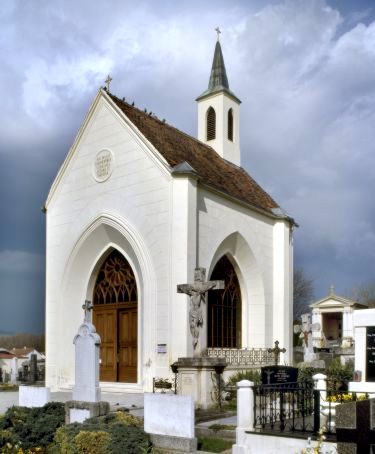 WW-I
was accompanied by a lot of suffering, but also by a short boom in the textile industry due to
military orders. After the annexation of Burgenland to Austria in 1921, the loss of the sales
markets in the East lead to enormous economic problems. However, the economy recovered again
thanks to the connection to the Austrian rail network in 1925 and the establishment of further
textile factories. At the end of the 1920’s, Pinkafeld was the most important industrial
center in southern Burgenland. The world economic crisis in the 1930’s brought this recovery
to a sudden halt. Due to its juridical and economic importance in its past, Pinkafeld was
elevated to the position of township in 1937. WW-I
was accompanied by a lot of suffering, but also by a short boom in the textile industry due to
military orders. After the annexation of Burgenland to Austria in 1921, the loss of the sales
markets in the East lead to enormous economic problems. However, the economy recovered again
thanks to the connection to the Austrian rail network in 1925 and the establishment of further
textile factories. At the end of the 1920’s, Pinkafeld was the most important industrial
center in southern Burgenland. The world economic crisis in the 1930’s brought this recovery
to a sudden halt. Due to its juridical and economic importance in its past, Pinkafeld was
elevated to the position of township in 1937.Many of Pinkafeld’s inhabitants died during WW-II, which lead to the collapse of the economy. Only after the termination of the Soviet occupation period was Pinkafeld able to recover again. A renewed boom of the textile industry after 1955 helped Pinkafeld become, once again, one of the most important industrial centers of the Burgenland. After the collapse of Pinkafeld’s textile factories because of the textile crisis of 1966, Pinkafeld changed from an industrial center to a modern town, offering a diverse range of schools, shopping centers and leisure centers. A university of applied science, a sport airfield, numerous shops, modern industrial enterprises, a garrison, the SOS Children’s Village, a well-maintained town with many points of interest, a range of gastronomic offerings and many other institutions all testify to the steady upward trend of the city of Pinkafeld. Original by Mag. Rudolf Köberl |
6) HISTORICAL BB NEWSLETTER ARTICLES Editor: This is part of our series designed to recycle interesting articles from the BB Newsletters of 10 years ago. The article (or rather, part of an article) that I've chosen to reprint is something BB member Gerhard H. Lang provided as a series in Newsletters 109 to 112 (July to November, 2002). The piece I've chosen is from newsletter 110 and was actually written by Matthia Artner of Großhöflein. As Gerhard said: "At the moment I'm working at Großhöflein, a little village near Eisenstadt. The RC parish there is publishing a monthly newspaper, which they give to every household. I read it and found two series - 'My life - memories of father Leopold Prizelitz' and 'At that time - Großhöflein 100 years ago,' by Matthias Artner. ...Matthias Artner belongs to the council of the RC parish. He describes some events out of the history and some stories of every day life, as for example: the past century, 80 years Burgenland, harvest, vintage and a few more. Every day life in Großhöflein is described here, but as far as I know, things could have been taken from almost every Burgenland village. I have permission ... to translate that stories into English and to publish them in the BB Newsletters. Enjoy reading! Gerhard H. Lang" I found the text by Matthias Artner to be quite interesting and informative about the realities of life in Burgenland 100+ years ago, so perhaps I will run more of this series in a later newsletter or, if this section interests you, you can go into the BB Newsletter archives and read the whole series yourself. THE BURGENLAND BUNCH NEWS No. 110 August 30, 2002 AT THAT TIME - GROßHÖFLEIN 100 YEARS AGO (by Matthias Artner) During the end of the 19th century, our peasants slowly became owners of property. One generation later they were able to grant that property to their heirs for the first time, resulting in strip fields, the so-called "Hosenriemen-aeckern" ("Hosenriemen" is another word for belt). That ongoing diminishment of the family acreage led to an almost total lack of saleable produce above family requirements, causing farming inefficiency. It led to an agrarian-crisis in the 20th century. At the same time, birth figures were high (many families had ten or twelve children) causing an enormous over population, which led to mass-emigration. 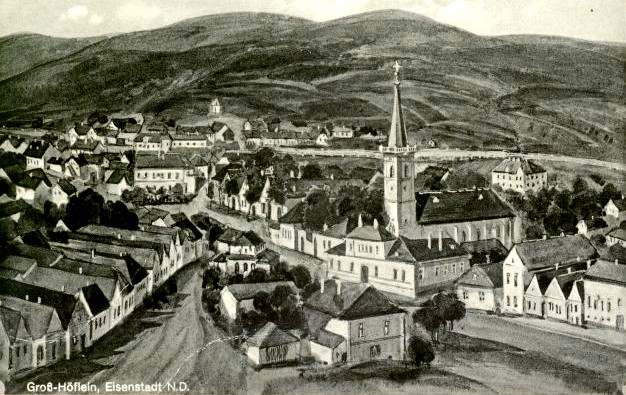 In
addition to the large emigration during the period between the World Wars, 33,000 people -
most of them young adults - migrated from the territory of today's Burgenland to the United
States during the period between 1880 and 1914. At the turn of the century, many
Grosshöfleiner migrated to the USA: Johann Marilitsch, 43 years, with wife and 8 children;
Andreas Piller, brick-layer, John Treiber, to Pennsylvania. Their descendants were looking for
living relatives in our village recently. In
addition to the large emigration during the period between the World Wars, 33,000 people -
most of them young adults - migrated from the territory of today's Burgenland to the United
States during the period between 1880 and 1914. At the turn of the century, many
Grosshöfleiner migrated to the USA: Johann Marilitsch, 43 years, with wife and 8 children;
Andreas Piller, brick-layer, John Treiber, to Pennsylvania. Their descendants were looking for
living relatives in our village recently.In most villages, population was highest at the turn of the century. Grosshöflein had 1527 inhabitants in 1890 and 1290 people in 1920. At the beginning of the 20th century, the population of today's Burgenland (former Westungarn) was mostly German - including the cities and villages in the frontier area, that rested under Hungarian administration in 1921. Language of instruction at school was German, but there were Hungarian lessons. About 1905, the only language was Hungarian, except in religious and a few German lessons, which ended in 1907. Parents and pupils mistrusted the "Magyarian"-led schools. Teachers only used Hungarian for the lessons, which the pupils barely understood. They had to memorize the Hungarian texts, but they did not understand - they had barely learned German. Everything got "Magyarized". The Grosshöflein parish registers had to be written in Hungarian. Parish priest Karl Stotz was renamed as "Karoly" and priest Julius Polak as "Gyula". At the municipal office, people had to sign with a Hungarian name instead of the official German, e.g., Franz was Ferencz, Johann became Janos and Anton was changed to Antal. Except for a few children, most pupils were happy when the 6-year compulsory education ended at the age of 12. Children often absented themselves from school, especially in their last year, because they had to work in the fields or at factories at the age of 12 (boys as well as girls). The Grosshöflein R.C. elementary school had only two classes at the turn of the century - it had 60 children in the first and 62 children in the second class. School ended at the end of May and started the first of November. There was a "recapitulation-school" with about 50 children and a Sunday school during the winter-months, which had two lessons a week. Most children were not able to read or write, neither in German nor in Hungarian, without making mistakes when they left school. If someone wanted to learn a trade, knowledge of Hungarian was essential. The students and the "intelligentsia" of the village - teachers, priests, notaries and government officials were the bearers of the "Magyarizing policy". But country people in their villages retained the dialects and ancient customs and so kept the German language in Burgenland. We owe it to them - and not the cultured classes - that our country is mostly German. The village was always home, regardless of what country administered it. The "Heimatschein" (a document) documented that village affiliation. Therefore - in spite of that Magyarization - our GG-parents mostly remained German speaking. |
7) ETHNIC EVENTS BETHESDA, MD (added late courtesy of Margaret Kaiser) Saturday & Sunday, November 10-11, 1 - 7 pm and 11 am - 5 pm: Hungarian Christmas Bazaar 2012. Women's Club of Bethesda, 5500 Sonoma Road, Bethesda, MD. Hungarian Meals, Desserts, Pastries, Wine, Salami, Sausage, Christmas Candy, Folk Art, Crafts, Christmas Cards, Books, Raffle. Information: Zsuzsa Takács 301-907-8038, Jutka Kölüs 703 481-5386. Events Saturday: 3 pm Scout Program, 4 pm "Táncház" Hungarian Folk Dancing with live music by Életfa folk band! Events Sunday: 1 pm Opening Speeches, Scout Program, Tisza Ensemble: Folkdances and music. 2:30 pm Scout Program. LEHIGH VALLEY, PA (courtesy of Bob Strauch) Saturday, November 3, 10 am - 2 pm: Ethnic Food Festival at Queenship of Mary Roman Catholic Church in Northampton (formerly Our Lady of Hungary). Sunday, November 25: German Christmas Dinner Show at the Evergreen Heimatbund in Fleetwood. Info: www.evergreenclub.org. LANCASTER, PA Saturday, November 10, 7:30-11:30 pm: Military Ball ($8/members and $10/guests). Lancaster Liederkranz, 722 South Chiques Road, Manheim, PA (717 898-8451) lancasterliederkranz@comcast.net. Music by the George Tarasek Orchestra. Saturday, November 17, 7:30-11:30 pm: Alpenrose Schuhplattler's Stiftungfest. Lancaster Liederkranz ($8/members and $10/guests). Music TBD. NEW BRITAIN, CT Saturday November 10, 6 pm: Schnitzel Dinner. Austrian Donau Club, 545 Arch Street, New Britain, CT (860 223-9401). Scha-Musi will perform along with a performance by the Alpenland Dancers. TORONTO, CANADA Saturday, November 10: Martini Dance at the Schwaben Club, hosted by the Toronto Burgenländer Club. |
8) BURGENLAND EMIGRANT OBITUARIES (courtesy of Bob Strauch) Joseph Domitrovits  Joseph
“Joe” Domitrovits, age 74, of New Paltz, New York, died Saturday, September 29, 2012 at St.
Francis Hospital, Poughkeepsie. Joseph
“Joe” Domitrovits, age 74, of New Paltz, New York, died Saturday, September 29, 2012 at St.
Francis Hospital, Poughkeepsie.Born on June 16, 1938, in Sumetendorf, Austria, he was a son of the late Vitus and Agnes (Garger) Domitrovits. He married MaryAnne Hafner on August 17, 1964 in New York City, NY. She predeceased him August 1, 2006. He and his wife were the former owners of the Austrian Village, New Paltz, NY. He is survived by three sons: Joseph J. Domitrovits of Eastchester, NY, Glen Domitrovits and Eric Domitrovits, both of New Paltz, NY He is also survived by his brother and sister-in-law, John and Maeve Domitrovits of Rosendale, NY, and many nieces and nephews. Calling hours will be Monday October 1, from 2-4 and 7-9 pm at Copeland Funeral Home, Inc., 162 South Putt Corners Road, New Paltz, NY. The funeral will be Tuesday at 10:00am at St. Joseph's Church, 34 South Chestnut Street, New Paltz, where a Mass of Christian Burial will be Celebrated. Burial will follow in Lloyd Cemetery, Highland. Irma McMillen  Irma
McMillen (née Feichtinger), age 92, of Pontiac, Michigan, passed away October 20, 2012. Irma
McMillen (née Feichtinger), age 92, of Pontiac, Michigan, passed away October 20, 2012. Born in Grafenschachen, Austria, Irma was a graduate of Michigan State University with advanced degrees from Wayne State University. She was a librarian in the Pontiac Schools where she served the children of Bethune Elementary and Jefferson Jr. High. Retired Executive Director of the Pontiac YWCA, former member of various boards and organizations including the Pontiac Symphony, Oakland County Pioneer and Historical Society; Irma was also the Recipient of the Heart of Gold Award from the Pontiac City Council. Survivors: husband, retired Pontiac Central Principal Donald McMillen; children, Joseph McMillen, Phyllis (Robert Badgley) McMillen, Matthew (Jeanne) Mc Millen and Denise (Casamir) Harmatys; grandchildren, Graham and Kate Tabor, Lauren, Dustin, Brett, Madeline and Gordon McMillen, Ted, Madeline and Nick Badgley. Please join us in celebration of her life. Visitation Monday October 22, 2012, 3 to 8 p.m. at Donelson, Johns and Evans Funeral Home, 5391 Highland Road, Waterford. Funeral Service to be held at Central United Methodist Church, 3883 Highland Road, Waterford on Tuesday October 23, 2012 at 10:30 a.m. with luncheon to follow. Interment at Great Lakes National Cemetery. Memorial contributions may be made to the Alzheimer's Association. Published in The Oakland Press Theresa Wilfinger  Theresa
Wilfinger, 90, formerly of Allentown, PA, until 1987, died October 20, 2012 at The Village at
Rockville in Maryland. Theresa
Wilfinger, 90, formerly of Allentown, PA, until 1987, died October 20, 2012 at The Village at
Rockville in Maryland.Born in Deutsch Kaltenbrunn, Austria, she was a daughter of the late Joseph and Theresa (Himler) Wilfinger and sister to the late Gottfried Wilfinger. Theresa was a former member of St. Peter's Evangelical Lutheran Church, Allentown. She was employed by Hess' Department Store for many years. Survivors: Sister, Frances Noyes; niece, Victoria Noyes, wife of Frank Carnovale; nephew, Michael Noyes, husband of Angela, father of Madalena, Natalia and Suzannah, all of Greenbelt, MD. Services: Graveside, 12:30 p.m., Saturday, October 27, 2012 at Woodlawn Memorial Park, 1500 Airport Rd., Allentown, PA. (www.weberfuneralhomes.com) Published in Morning Call on October 26, 2012 |
END OF NEWSLETTER |
NOTICE (Terms and Conditions): The Burgenland Bunch (BB) was formed and exists to assist Burgenland descendants in their research into their heritage and, toward that end, reserves the right to use any communication you have with us (email, letter, phone conversation, etc.) as part of our information exchange and educational research efforts. • If you do not want your communication to be used for this purpose, indicate that it is "confidential" and we will abide by that request. • Correspondents who communicate with the BB without requesting confidentiality retain their copyright but give a non-exclusive license to the BB allowing us to forward to BB members, publish in our monthly newsletter or on our website, and/or subsequently and permanently archive all or parts of such communications. The Burgenland Bunch homepage (website) can be found at: http://www.the-burgenland-bunch.org/ Burgenland Bunch Newsletter, copyright © 2012 by The Burgenland Bunch All rights reserved. Permission to copy excerpts granted if credit is provided. |
 News
News